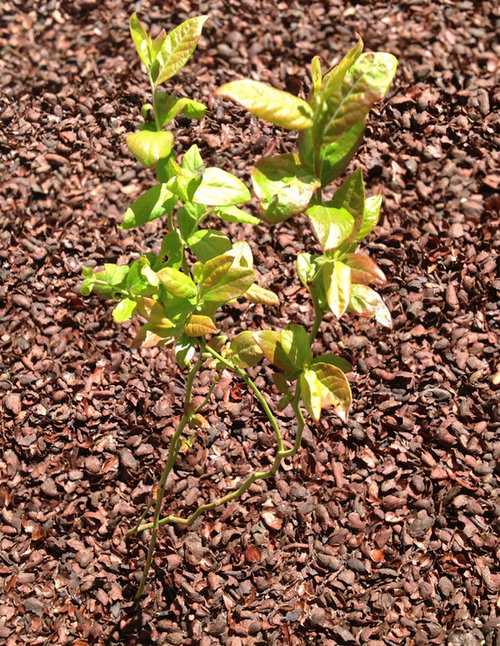Red Blueberry Leaves, pH Test Inconclusive
galiana
10 years ago
Related Stories

EDIBLE GARDENSSummer Crop: How to Grow Blueberries
Plant blueberries in spring or fall for garden beauty through three seasons — and a sweet superfood in summer
Full Story
FALL GARDENING5 Ways to Put Fall Leaves to Work in Your Garden
Improve your soil and yard the organic way with a valuable garden booster that grows on trees
Full Story
GARDENING GUIDESWhat's Wrong With My Plant? Leaves Often Hold the Clues
Learn how to identify common plant ailments by reading their leaves
Full Story
WINTER GARDENINGPruning Secrets for Exquisite Roses
Encourage gorgeous blooms year after year with this time-tested advice on how to prune your rosebush in winter for health and shape
Full Story
GARDENING GUIDESHave Acidic Soil in Your Yard? Learn to Love Gardening Anyway
Look to acid-loving plants, like conifers and rhododendrons, to help your low-pH garden thrive
Full Story
GARDENING GUIDESGrow a Beautiful Garden in Alkaline Soil
Got alkaline soil? Learn how to manage it and the many beautiful plants that will thrive in this ‘sweet’ soil
Full Story
FARM YOUR YARD6 Things to Know Before You Start Growing Your Own Food
It takes time and practice, but growing edibles in the suburbs or city is possible with smart prep and patience
Full Story
GARDENING GUIDESGarden Myths to Debunk as You Dig This Fall and Rest Over Winter
Termites hate wood mulch, don’t amend soil for trees, avoid gravel in planters — and more nuggets of garden wisdom
Full Story
REMODELING GUIDESWisdom to Help Your Relationship Survive a Remodel
Spend less time patching up partnerships and more time spackling and sanding with this insight from a Houzz remodeling survey
Full Story
GARDENING GUIDES7 New Plants to Grow for Beautiful Foliage
Add color, structure and interest to your garden with these recently introduced plants that sport exceptional foliage
Full StorySponsored
Leading Interior Designers in Columbus, Ohio & Ponte Vedra, Florida
More Discussions









Bradybb WA-Zone8
fruitnut Z7 4500ft SW TX
Related Professionals
Grand Haven Landscape Architects & Landscape Designers · Jennings Landscape Architects & Landscape Designers · Chattanooga Landscape Contractors · Homewood Landscape Contractors · Las Vegas Landscape Contractors · Mashpee Landscape Contractors · Melrose Landscape Contractors · Middletown Landscape Contractors · New Cassel Landscape Contractors · Northport Landscape Contractors · Pompton Lakes Landscape Contractors · Round Lake Landscape Contractors · Maple Heights Landscape Contractors · Shenandoah Landscape Contractors · Bensenville Landscape ContractorsErnie
galianaOriginal Author
fruitnut Z7 4500ft SW TX
Ernie
fruitnut Z7 4500ft SW TX
drew51 SE MI Z5b/6a
Ernie
northernmn
ericwi
Bradybb WA-Zone8